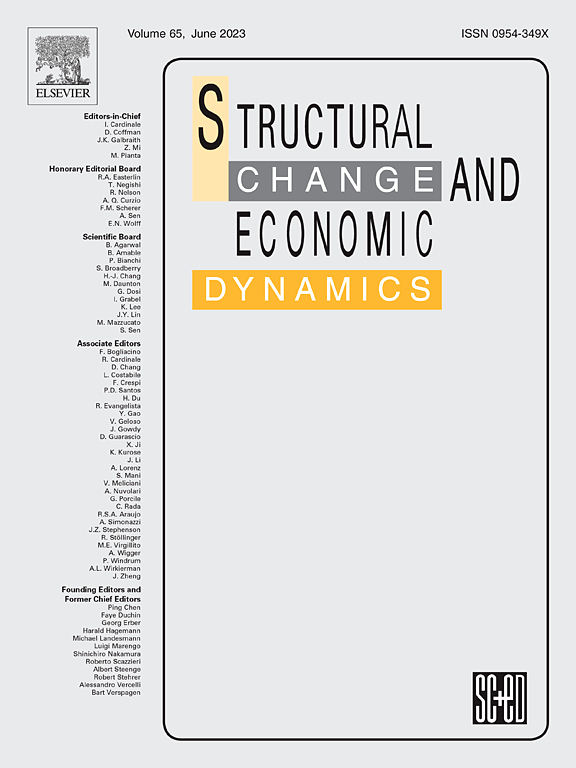Does Saudi Arabia's International Competitiveness Improve Due to Sanctions Imposed on Competitors? The case of two wars
IF 5.5
2区 经济学
Q1 ECONOMICS
引用次数: 0
Abstract
In the early 1990s, Saudi Arabia ascended to the influential role of the lone swing producer in the global oil market by filling the output gap left by competitors displaced by sanctions and war (Iraq) or internal collapse (Soviet Union). Our question is whether the Kingdom similarly benefitted from the 2022 Russia-Ukraine War and the Western sanctions on Russian petroleum exports. Building on Razek and McQuinn (2021), we rely on the Real Effective Exchange Rate (REER) to gauge Saudi Arabia's international competitiveness. We apply vector autoregressive (VAR) and vector error correction model (VECM) techniques to a 1986–2022 sample and compare the early 1990s and 2022 using historical decomposition. We allow for various shock transmission channels and employ the Brent-Urals spread and Russia's geopolitical risk index (GPR) to capture geopolitical risk affecting Russian petroleum exports. Our findings show that Saudi international competitiveness increased in the 1990s but decreased in 2022. In fact, the 2022 crisis – unlike the early 1990s– resulted in a new regime in which extreme oil backwardation regimes fail to reward Saudi competitiveness, with oil exports ceasing to be the primary determinant of Saudi Arabia's competitive advantage. We discuss the effects of the Kingdom's investment diversification strategy and draw some conclusions about global energy price volatility and U.S. global dominance.
对竞争对手的制裁是否提高了沙特的国际竞争力?以两场战争为例
上世纪90年代初,沙特阿拉伯填补了因制裁和战争(伊拉克)或内部崩溃(苏联)而流离失所的竞争对手留下的产量缺口,成为全球石油市场上唯一有影响力的摇摆生产国。我们的问题是,沙特王国是否同样受益于2022年的俄乌战争和西方对俄罗斯石油出口的制裁。在Razek和McQuinn(2021)的基础上,我们依靠实际有效汇率(REER)来衡量沙特阿拉伯的国际竞争力。我们将向量自回归(VAR)和向量误差修正模型(VECM)技术应用于1986-2022年的样本,并使用历史分解比较20世纪90年代初和2022年。我们考虑到各种冲击传导渠道,并采用布伦特-乌拉尔价差和俄罗斯地缘政治风险指数(GPR)来捕捉影响俄罗斯石油出口的地缘政治风险。我们的研究结果表明,沙特的国际竞争力在20世纪90年代有所提高,但在2022年有所下降。事实上,与上世纪90年代初不同的是,2022年的危机导致了一种新的机制,在这种机制下,极端的石油现货溢价机制无法奖励沙特的竞争力,石油出口不再是沙特竞争优势的主要决定因素。我们讨论了沙特王国投资多元化战略的影响,并得出了一些关于全球能源价格波动和美国全球主导地位的结论。
本文章由计算机程序翻译,如有差异,请以英文原文为准。
求助全文
约1分钟内获得全文
求助全文
来源期刊

Structural Change and Economic Dynamics
ECONOMICS-
CiteScore
9.60
自引率
4.90%
发文量
159
期刊介绍:
Structural Change and Economic Dynamics publishes articles about theoretical, applied and methodological aspects of structural change in economic systems. The journal publishes work analysing dynamics and structural breaks in economic, technological, behavioural and institutional patterns.
 求助内容:
求助内容: 应助结果提醒方式:
应助结果提醒方式:


